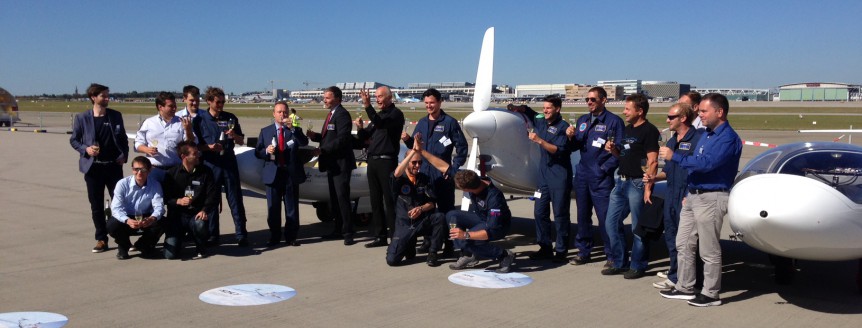A day after Pipistrel, the DLR and associates flew the first public demonstration of their four-seat hydrogen-powered HY4, your editor and a friend took a brief hop around the Aurora State Airport in Oregon in EAA’s Ford Trimotor, the first certified airliner in America. The two events, roughly equal in duration, if not in historicity, demonstrate a readily observable progress in aeronautics. A quickening of design and technology 14 years after the Ford 5AT first flew on a scheduled route that took 51 hours total time to cross the United States (and split transport duties with trains), your editor’s father was whisked nonstop by Army Air Corps C-54 across the Atlantic to Shannon, Ireland, and then to Bobbington and Newquay, England to work on bombers for the duration of the conflict. Those 14 years seem like a major quickening of design and technology, which brought us pressurized cockpits, turbocharged engines, and great leaps forward in speed, endurance and reliability. Following the …
The HY4 Will Be Part of a Bigger Plan
As part of a planned network of hydrogen-fueled Air Taxis, DLR’s HY4 four-seat airplane will initially land at one of 60 fields in Germany outfitted to supply its unique needs. These fields will have hydrogen storage and fueling systems for ground transportation, making for a large web of clean transportation by air and land. With various car manufacturers promoting their hydrogen vehicles, it would be easy to see hydrogen aircraft landing, passengers departing in H2-powered cars, and even hardy explorers pedaling to and from the airport on their H2 bikes. One bicycle maker is planning to be part of the 60-airport plan. The Linde Group showed off its innovative pedelec (“pedal electric cycle”) this week. Instead of a battery, it gets power assistance from a compact fuel cell which generates electric power from hydrogen and oxygen taken from the surrounding air. The “highly efficient and zero-emissions drive system supports assisted pedaling over a range in excess of 100 kilometers with …

